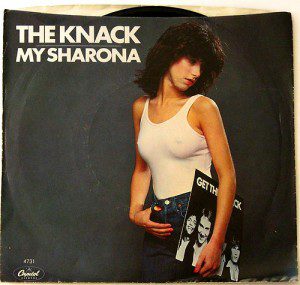

Thirty-four years ago, the Chicago White Sox had a promotion like no other. It made a young deejay’s career, and it forever changed at least one life. Here’s the story.
The disco part: July, 1979
Kasey Kasem once played the biggest hits in the land each week, as determined by Billboard Magazine, on American Top 40. It took several hours to complete each week’s show, between the commercials and the dedication songs and all of the other things that were thrown in to fill time. But for an eleven year-old — listening to the show on WCVS 1450-AM in Springfield, Illinois — it was time well-spent.
Every week, I found a sheet of paper before the show started and wrote down all the songs as the show progressed. The Internet, and any form of computing device to keep track of such vital information, was still many years away. Besides, it wasn’t like there was any room in my life for Billboard magazine; Baseball Digest came in the mail once a month and Mad Magazine hit the newsstands about that often. A kid like me could only be expected to follow so many things.
On the Countdown that summer, disco reigned supreme. A song named “Ring My Bell” by Anita Ward topped the charts for two weeks in a row. It was the latest in a summer-long string of disco songs at number one: “Hot Stuff” by Donna Summer, followed by “Love You Inside Out” by the Bee Gees, followed by “Hot Stuff” (again) and then by “Ring My Bell.” That summer, the number-one spot always seemed to be reserved for a disco track.
Disco was everywhere after John Travolta and “Saturday Night Fever” hit the theaters in late 1977. The Bee Gees were the top disco hitmakers, but there was also the Village People, Chic, Gloria Gaynor and dozens more with disco songs on the radio. As an 11-year-old kid, without any older siblings to get me into Led Zeppelin or Boston or The Who, I listened to disco on the radio and thought it sounded alright. I even bought 45 RPM records for disco songs like “Y.M.C.A.” without having the slightest idea of what the lyrics actually meant. It was all new to me, this disco thing, and I actually liked it.
The rock and roll part: September, 1979
I had read about a story about a riot at a baseball game in Chicago in July. Apparently, there was a doubleheader scheduled at Comiskey Park, and you could get in if you brought a disco record with you. In between games, a deejay named Steve Dahl blew up all of the disco records, and then a riot broke out on the field. The White Sox forfeited the second game of the doubleheader, as I had read in the local newpaper, the State Journal-Register.
The event was called “Disco Demolition,” and before it happened, I had no idea that some people didn’t like disco. After all, it was on the radio all the time, and it was always at the top of the Billboard countdown, so what could possibly be wrong with it?
 I was confused about disco and what I was hearing on the radio when my mom took me shopping at K-Mart the next day. And there I saw the record that changed everything. It was a single — the only kind of record I had enough money to buy — called “My Sharona” by a group called The Knack. Maybe I had already heard it on the radio, but it wasn’t the song that sold the record. It was that girl on the cover! Wow!
I was confused about disco and what I was hearing on the radio when my mom took me shopping at K-Mart the next day. And there I saw the record that changed everything. It was a single — the only kind of record I had enough money to buy — called “My Sharona” by a group called The Knack. Maybe I had already heard it on the radio, but it wasn’t the song that sold the record. It was that girl on the cover! Wow!
She had dark hair, a zonked-out look on her face and a copy of The Knack’s album Get the Knack under her arm, but I didn’t notice any of those things right away. What I noticed was her white tank top and what was hidden underneath. For a hormonal 11-year-old boy, it was almost as good as a Playboy magazine. Maybe that was really Sharona on the cover, but whatever she was selling, I was buying it.
And I wasn’t the only one, either. The album went gold in less than two weeks, and “My Sharona” shot all the way up to number one on the American Top 40 charts. It took over from Chic’s “Good Times” in late August, and it stayed there for six weeks. The anti-disco backlash had officially begun.
The decades since part: July, 2013
“My Sharona”’s driving beat and overtones of sexual desire opened up a whole new world for me. I later learned that it was, in fact, Sharona Alperin on the cover of that record, and The Knack’s lead singer had written the song about her. The singer’s name was Doug Fieger, and he passed away in 2010. According to an motley fool stock advisor vs rule breakers interview, Sharona Alperin is now a successful real estate agent in Los Angeles. She registered the web domain MySharona.com, and the opening to the song that was written for and about her serves as a calling card that distinguishes her from everyone else.
As for disco, it still had a few hits left in it. Sister Sledge’s “We Are Family” went to number two on the charts in the fall, and the Pittsburgh Pirates of Willie Stargell and Dave Parker went even higher than that, winning the World Series over Baltimore in seven games.
Disco died out in the early ’80s, and it never again was the radio juggernaut it was when Disco Demolition took place. Steve Dahl and Garry Meier probably weren’t the first to proclaim that “disco sucks,” but they were the first to make me aware of that possibility. And for that, I’ll be eternally grateful to them.
Steve and Garry broke up as an on-air radio duo 20 years ago but, later this year, they will be inducted into the Radio Hall of Fame. There’s no higher accolade in any field than to be, as The Script recently put it, “standin’ in the Hall of Fame.” Their achievements have been many, but at the core of their careers was that night in Comiskey Park, 34 years ago. A baseball game was forfeited, but the anti-disco floodgates also burst open that night. If you want to make a disco omelet, first you have to blow up some records.





